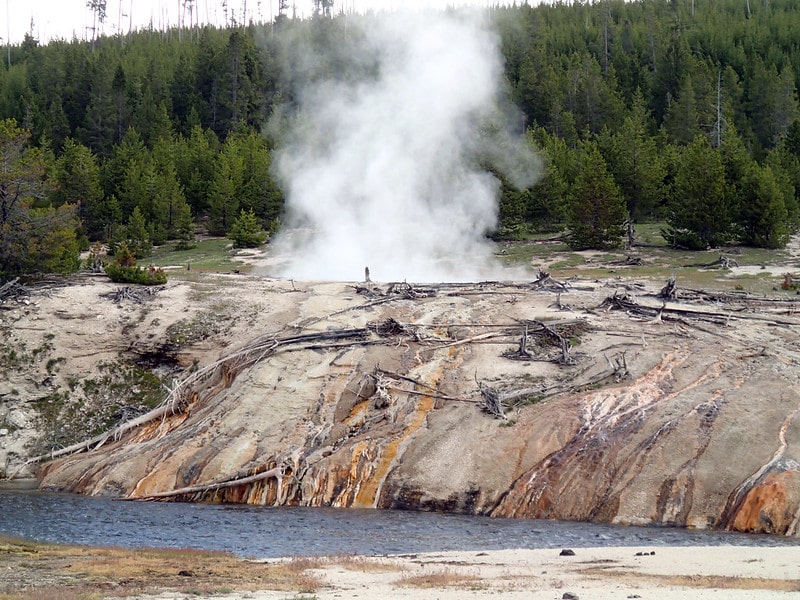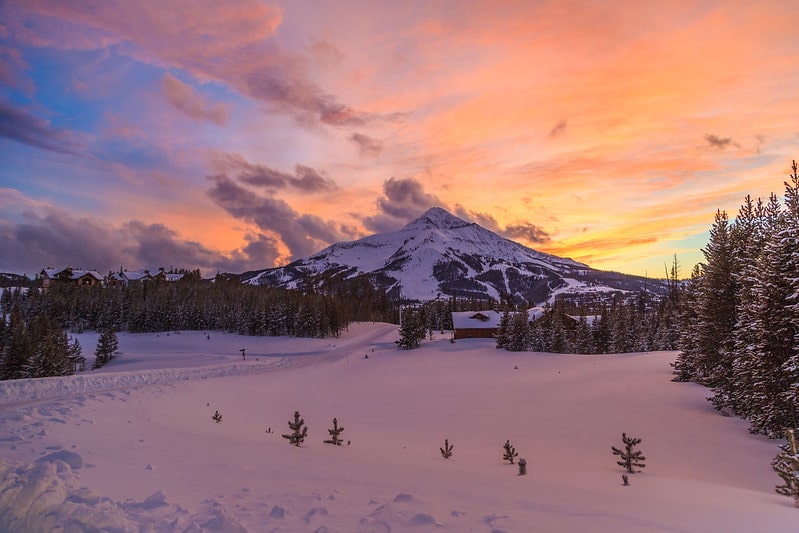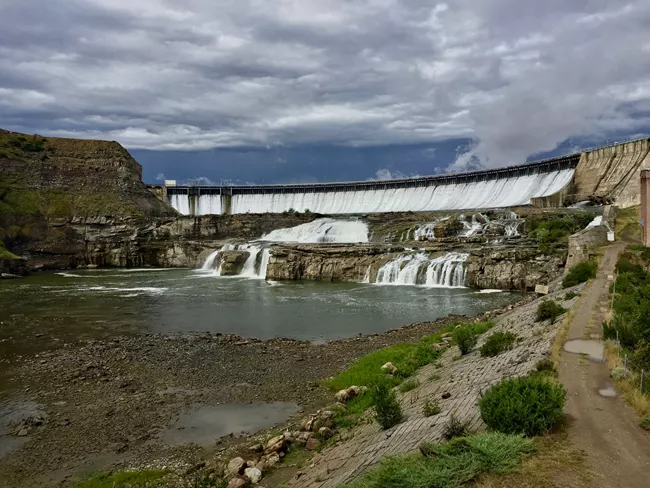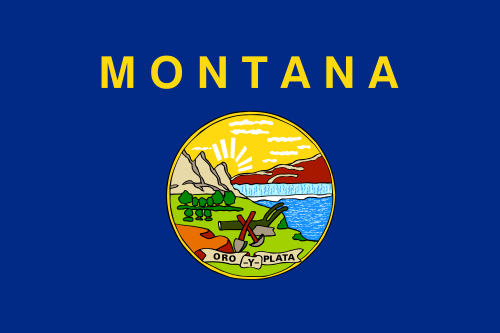Last updated on May 5th, 2024
97. Interestingly, Montana has given its three electoral votes to Republicans ever since the early 1950s with the exception of Lyndon Johnson’s in 1964 and Bill Clinton in 1992.
98. Montana is the first state in the United States to elect a woman to Congress. Montana native, Jeanette Rankin was elected to Congress in 1916 and re-elected in 1940. Jeanette Rankin was against the World Wars and also opposed the U.S. attack on Pearl Harbour. Hers was the only vote against the war and she faced furious opposition for her views.
99. With Deer Lodge as the county seat, Powell County has the greatest ratio of men to women in the state, with 162 men for every 100 women. Deer Lodge is the location of the State Penitentiary, where an average of 1,600 men reside. In second place is Toole County, with 129 males for every 100 females; this is the location of Crossroads Correctional Center, a privately owned prison with about 665 inmates.
100. Part of the Yellowstone National Park is located in Montana. The park experiences 1000-3000 earthquakes annually and is also home to super volcanoes. It is the first national park in the U.S.
101. Montana is also home to the “Crown of the Continent” – the Glacier National Park.
102. The number of glaciers in the Glacier National Park in Montana is diminishing. It started with 35 glaciers when it got its name; five of them can be gone in the next decade at the rate they are melting.
103. Before the 1959 Hebgen Lake earthquake in Montana, the Sapphire pool used to be surrounded by strange biscuit-like deposits, hence the name Biscuit Basin. The deposits were blown away during the earthquake.
104. Montana is the home to the world’s First International Peace Park. This park is a combination of Alberta’s Waterton Lakes National Park in Canada and the Glacier National Park in Montana.
105. Another fun fact about Montana is that it is home to the world’s first-ever extreme skier. Scot Schmidt was born in July 1961 and raised right here in Helena. He is a professional extreme skier and currently lives in Big Sky, Montana.
106. Montana is known for building the first Luge run in the US. It was built in Lolo Hot Springs, Montana, in 1965. It is a sport where the athlete lays flat on their back on a sled riding downhill.
107. The legendary Native American chief Sitting Bull has a town named after his daughter. The town of Ekalaka in Montana is named after the daughter of this famous chief.
108. An interesting fact about the Missouri River is that apart from the fact that it is the longest in the world, it also originates in Montana. It starts in the Rocky Mountains in Montana.
109. Ted Turner, the founder of the CNN Company, got the idea to start this type of service while he was in Montana. CNN is the news company that keeps you up to date on events from around the globe.
110. Have you ever wondered why there are those Gideon Bibles in Hotel rooms all over the country? Well, the idea or trend was invented right here in Montana.
111. A version of oatmeal known as cream of the West is native to Montana, and families lived on it for many years. It is a roasted wheat cereal and has been a staple since 1914.
112. The movie star Frank James Cooper, known as Gary Cooper, is a native of Montana. He was born in 1901 on May 7 in Helena and is the youngest of two sons.
113. The Desert Land Act of 1877, allowed settlement of Arid Lands and allocated 640 acres to settlers for a fee of $0.25 per acre and a promise to irrigate the land.
114. According to a Montana law, a woman is not allowed to open her husband’s mail. Hopefully, it was not meant to prevent wives from spending their husband’s paychecks before they saw it.
115. You are not allowed to throw any object across the street in Helena, Montana. This is but one of the many weird laws in the capital city of this state.
116. Montana formed a strong force in 1884 when the residents of the state grew tired of its lawlessness. In the first year of its existence, they were able to catch as many as 35 horse and cattle thieves.
117. While other states and everyone else around the world would say pricey when something is expensive, the Montana people say it differently. They will use the word spendy for expensive.
118. During World War I, approximately 1500 Montanans died and 2437 were injured. Almost 40,000 Montanans volunteered or drafted for the war.
119. For World War I, Montana contributed one of the highest numbers of soldiers per capita of any state. It was higher than 25% of any other state on a per capita basis.
120. Did you know that during World War II, almost 30 Japanese balloons landed in Montana? However, no damage to life or property resulted from these balloons.
121. One of the worst defeats of the US Army was at the Battle of the Little Bighorn in 1876. It was also called Custer’s Last Stand and marked a decisive victory for Native Americans.
123. Fort Benton was established in 1846 by the American Fur Trading Company on the Missouri River. Major Alexander Culbertson named it Fort Lewis, but it was renamed in 1850.
Points of interest in Montana

The Boiling River: the point where hot spring enters Gardner River is referred to as the Boiling River. Both hot and cool waters come together to create warm temperatures that are comfortable for swimming. It is a naturally hot tub and a great spot to soak up the beauty of Yellowstone.
The Big Sky County: Montana is referred to as the Big Sky County due to its many vantage points. Its horizon spreads out under the panoramic sky as in the case of the Helena-Lewis and Clark National Forest. There are several vantage points to see the migrating waterfowl. The 2.8 million acre draws skiers, hikers, fishers, and mountain bikers from all corners of the world.
Home to Unique Wildlife: there were two forests initially in Neihart-Helena-Lewis and Clark, which later combined to become a home of peculiar wildlife. People visit the national park to see a mountain goat, elk, bighorn sheep, deer, grizzly bears, black bear, gray wolf, bald eagles, peregrine falcon, blue grouse, and mountain lion, among others.
The Custer’s Last Stand: the Battle of the Little Bighorn occurred around the ravines and ridges Little Big Horn River. The fight was between the soldiers of the Lakota Sioux, the Northern Cheyenne tribe, and the 7th US Calvary Regiment. The war happens to be a symbol of the clash of 2 completely different cultures: the horse/buffalo culture from northern plain tribes and the industrialized US. The aftermath was the death of Custer together with his troop. A national monument was built to commemorate the Great Sioux War of 1876 and a clash of culture.

Views of 3 US States: there is a bountiful mountain experience at the Big Ski Resort. There are 4 cliffs, 36 lifts, and over 300 runs. On clear days, you can see three states – Wyoming, Idaho, and Montana as well as the Yellowstone and Tetons national parks.
3 Wonders of the Great Falls: in 2011, the oldest man (Walter Breuning) on earth was said to hail from the Great Falls. Secondly, the shortest river in the world is found here. The Roe River runs about 201 feet. Thirdly, the biggest fresh water spring in the United States (Giant Springs) is in Great Falls.
Giant Springs in Great Falls, one of the largest freshwater springs in the world, pumps out 7.9 million gallons of water per hour at a constant temperature of 54°F. The water has been carbon-dated at three thousand years old. It forms the Roe River.

A Smoke Stack So Big: the Anaconda Smelter Stack dates back to 1918 and was created for the smelting operation of massive copper. Standing at 585 ft high, the chimney is one of the tallest freestanding masonry work, so tall that the Washington Monument can fit in.
The Rimrock Hoodoos: one of the best adventures you can do in Billings is hit Swords Park Trail. After about 0.8 miles, you will get to the hoodoos or toadstools. The colors of the rocks make great backdrops for photos. You can wander around in all directions but you may not climb them. While heading back to the trailhead parking, you can retrace your footsteps via the dry wash.
America’s Biggest Skiing: located midway between West Yellowstone and Bozeman, the Big Sky Resort got its name from its layout. Its paths are carved on a magnitude of terrain with a big sky above. Crowds love the powder stashes that are scattered evenly as a result of consistent snowfall. The land around here is covered by snow more than the skiers themselves.
The Surfing Downtown of Missoula: an evening stroll at Missoula would be incomplete without stopping by the bridge downtown. Surfers come here to ride waves of the gentle Clark Fork River. The man-made waves are right at the city center for the enjoyment of both locals and international tourists.
Most Historic City of Montana: Butte-Silver Bow was the first biggest city in Montana and in the west of Mississippi River. The early days involved the rise of Copper Kings and a mining camp that led to the founding of the labor movement. After decades of reduced mining, the city turned into an urban renaissance with a beautiful landscape.
Dinosaur Trail, Havre: the H. Earl Clack Memorial Museum gives an opportunity to visitors to drive through a series of dinosaur sites. The remains of the 75 million-year-old dinosaur embryos have been preserved at Judith River Formation. This is an indication that the area was once covered by an inland sea.
Yellowstone Wildlife Sanctuary- A Haven for Rescued Animals: abandoned and rescued native wildlife find shelter at Yellowstone Wildlife Sanctuary. The orphanage never releases the animals back to the wild. So you can go and learn all about the history of bobcats, mountain lions, bison, eagles, wolves, elk, and black bears.
Facts about the flag of Montana

